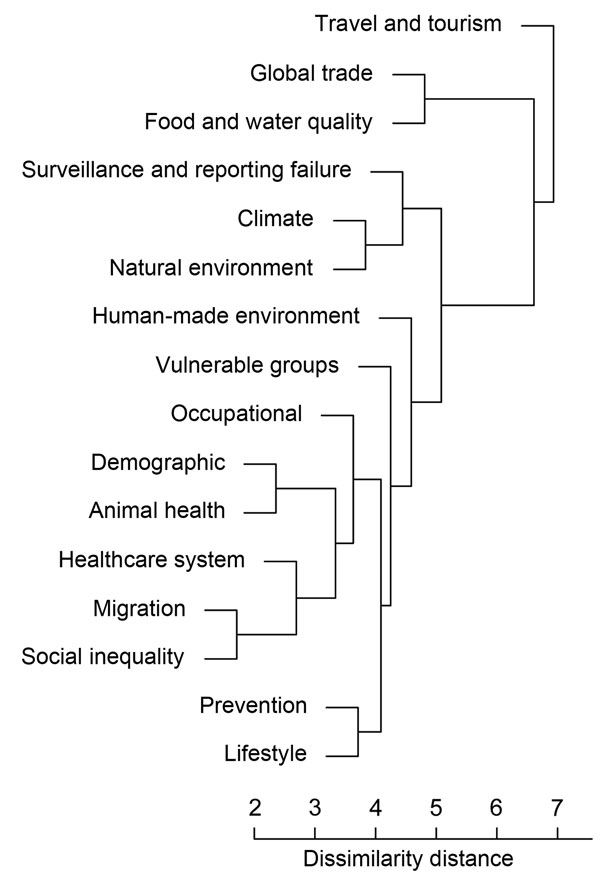Volume 22, Number 4—April 2016
Perspective
Determinants and Drivers of Infectious Disease Threat Events in Europe
Figure 3

Figure 3. Cluster dendrogram from hierarchical cluster analysis of drivers contributing to observed infectious disease threat events (IDTEs), Europe, 2008–2013. Individual segments (leaves) on the lower part of the tree are more related to each other, as indicated by distances between the branches. Drivers below travel and tourism also occurred less often as underlying drivers of IDTEs and tended to be more contextual in nature. Scale bar indicates dissimilarity distance for drivers, as measured by frequency of pairwise co-occurrence in clusters. Similar drivers (e.g., that co-occurred in outbreaks) are at a close distance, and those that were more independent of other drivers show higher dissimilarity.
Page created: March 15, 2016
Page updated: March 15, 2016
Page reviewed: March 15, 2016
The conclusions, findings, and opinions expressed by authors contributing to this journal do not necessarily reflect the official position of the U.S. Department of Health and Human Services, the Public Health Service, the Centers for Disease Control and Prevention, or the authors' affiliated institutions. Use of trade names is for identification only and does not imply endorsement by any of the groups named above.